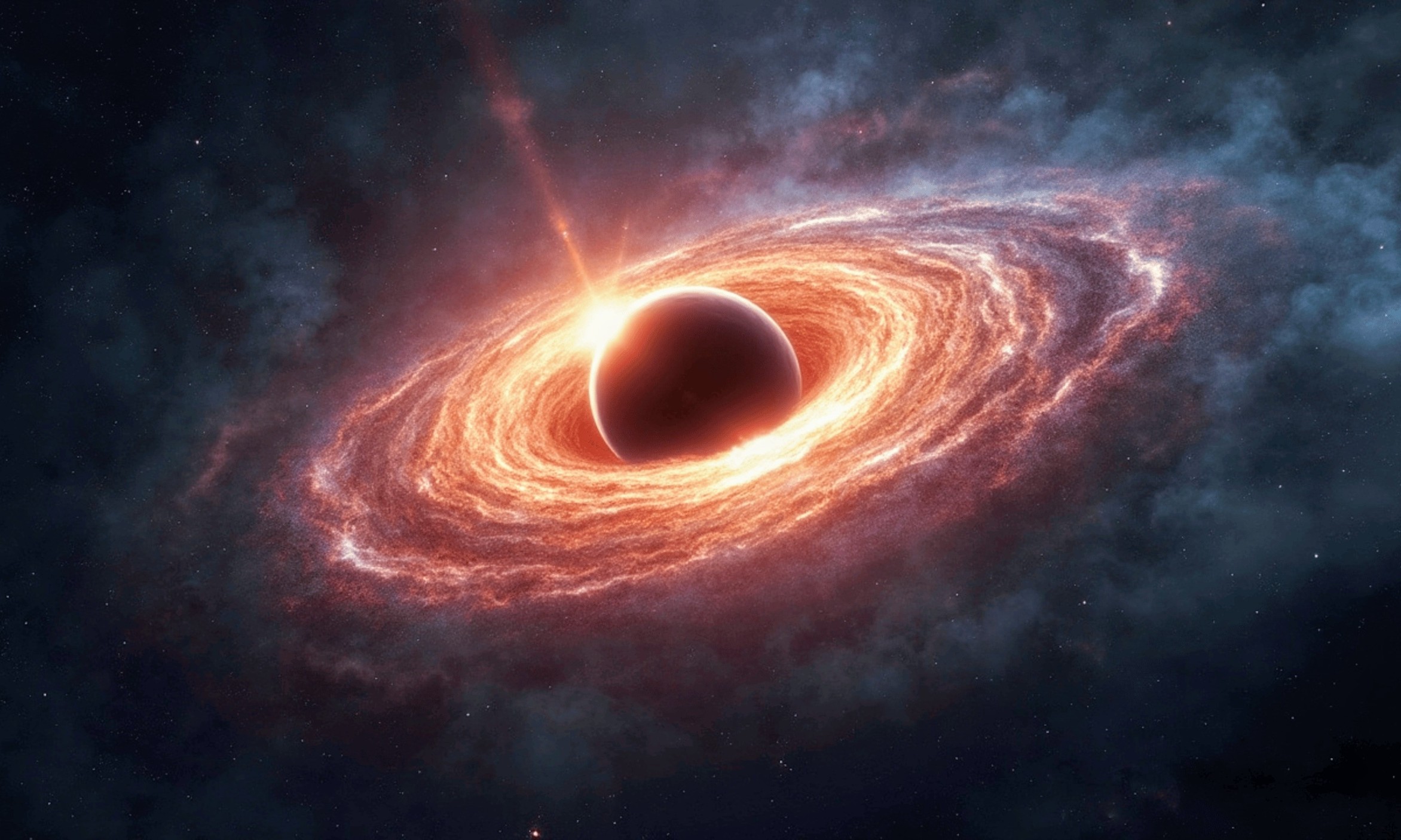Exoplanets used to be fringe objects in astronomy. Now, they are popular subjects for testing ideas about the composition of the universe.
A new study proposes that some gas giants might steadily collect dark matter in their cores until the buildup tips into a collapse that forms a tiny black hole.
Mehrdad Phoroutan-Mehr, a graduate researcher at the University of California, Riverside (UCR), led the work with postdoctoral researcher Tara Fetherolf.
Planets help detect dark matter
Astronomers now have thousands of worlds to work with across many ages, sizes, and orbits. NASA’s exoplanet archive lists nearly 6,000 confirmed planets as of mid 2025.
Gas giants are especially handy for this kind of test. They have huge volumes and cold interiors compared with stars, which makes any extra energy source easier to notice.
The team modeled how heavy, non-annihilating dark matter would move through a Jupiter-like world. The particles would gradually lose speed, settle into the center, and pile up.
Once that central clump passes a critical mass, gravity wins. The clump collapses into a black hole that either begins to feed on the surrounding gas or evaporates if it is small enough.
How planets may form black holes
The researchers focused on the superheavy, non-annihilating case scenario because captured particles never remove themselves by destroying each other. That makes the buildup relentless.
Under those conditions, the core can collapse on observable timescales in some planets. The possibility extends to multiple collapses throughout a single planet’s lifetime if capture continues.
In plain language, if the parameters line up, a Jupiter-mass world could quietly become a Jupiter-mass black hole. The object would keep the planet’s mass but lose the planet’s bulk.
“As the central concentration of dark matter grows in gaseous planets, a black hole may form and then accrete the surrounding material. Discovering a black hole with the mass of a planet would be a major breakthrough,” noted Phoroutan-Mehr.
Signs of planet black holes
A planet that turns into a black hole would still tug its star in the same way, so radial-velocity and astrometric signals would persist. Transit dips, however, could vanish because the body shrinks far below a star-crossing silhouette.
That mismatch creates a check. If we see stellar wobbles that imply a giant planet but repeated photometry no longer shows transits, the system deserves a closer look.
Microlensing adds a different angle. A compact lens and a puffier planet of the same mass bend light nearly the same way in simple events, so single light curves will not easily separate them.
Population statistics can help. If many high-mass “planets” near the galactic center lack transits yet show dynamical signals, that pattern would be hard to blame on chance alone.
How telescopes can check
The Nancy Grace Roman Space Telescope’s Galactic Bulge Time-Domain survey will capture tens of thousands of micro-lensing events in fields rich in dark matter. That is exactly where this model expects stronger capture and faster collapses.
Roman’s microlensing plus precise astrometry can flag planetary-mass compact objects and map their distribution. If planet-mass black holes cluster where the dark matter density is higher, that would lift this idea above speculation.
There is also a thermal route. Independent work showed that dark matter annihilation could heat exoplanets, raising their infrared glow beyond what cooling alone predicts.
Small black holes could also evaporate by Hawking radiation, dumping high-energy particles into the planet or, if the particles escape, into space. Either outcome offers a potential signal, though today’s instruments lack the sensitivity to chase the faintest cases.
Limits of the idea
This is not a blanket prediction that all gas giants are doomed. Many parameters must align, from the particle mass to the scattering cross section and the local dark matter density.
The absence of planet-mass black holes would be informative as well. If Jupiter-like worlds remain intact in regions where the model expects collapses, that would carve away at the allowed properties of dark matter.
The researchers also noted that multiple observational methods must be combined. No single transit, lens, or velocity signal will settle the question in isolation.
There are limitations in the physics too. Capture and drift times depend on interior temperature and density profiles, which are still debated for many planets, and even modest changes can shift the thresholds.
Why this matters for dark matter
The research could turn an ordinary planetary survey into a particle-physics experiment. We already collect the data while hunting for new worlds.
A confirmed planet-mass black hole would point straight at a non-annihilating, very heavy particle candidate. That would push the conversation about dark matter beyond the ranges probed by common terrestrial detectors.
Even a null result tightens the net. If transit catalogs remain full and consistent with radial-velocity and astrometric counts, those absences pin down cross sections that would have produced collapses.
The framework invites new cross-checks as the exoplanet census grows. Roman’s catalogs, plus follow-up from ground observatories and future direct-imaging missions, set the stage for a decisive test.
The study is published in the journal Physical Review D.
—–
Like what you read? Subscribe to our newsletter for engaging articles, exclusive content, and the latest updates.
Check us out on EarthSnap, a free app brought to you by Eric Ralls and Earth.com.
—–
